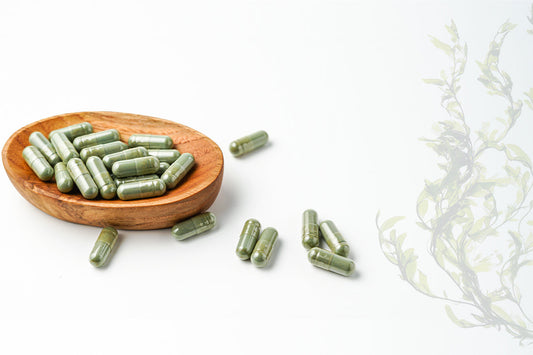Calcium is a mineral that plays a big role in helping your body maintain strong bones and teeth. It also supports muscle function and helps your heart and nerves work the way they should. While many people connect calcium with just dairy, there are actually many other foods rich in calcium. Knowing where to find good sources of calcium—especially if you're lactose intolerant or looking for dairy-free options—can make it easier to meet your daily calcium needs.
This guide will walk you through the best calcium-rich foods, how much calcium they offer, and how to get enough through your diet without having to rely heavily on supplements. Whether you're young, older, active, or simply trying to support long-term bone health, this is a helpful place to start.
How Much Calcium Do You Need?
Before we get into the foods, it's helpful to know how much calcium your body needs. Here's a general idea based on age:
- Adults (19-50 years): 1,000 mg of calcium per day
- Women 51+ and men 71+: 1,200 mg of calcium per day
- Teens (9-18 years): 1,300 mg per day
Getting too little can affect your bones over time. On the flip side, high doses of calcium—especially from supplements—may not always be the best choice unless advised by a health expert.
Top Calcium-Rich Foods to Include in Your Diet
- Dairy Products
Dairy remains one of the most well-known sources of calcium.
-
- Milk (1 cup): ~300 mg of calcium
- Yogurt (1 cup, plain low-fat): ~415 mg
- Cottage cheese (1 cup): ~140 mg (calcium content varies)
- Cheese (1 oz cheddar): ~200 mg
The body absorbs calcium from dairy quite well, making it a reliable source. For those who can enjoy dairy, it’s a simple and tasty way to meet your calcium intake goals.
- Fortified Foods
Some foods are fortified with calcium, meaning calcium has been added to them during processing.
-
- Fortified plant-based milks (almond, soy, oat): ~300 mg per cup
- Fortified orange juice: ~300 mg per cup
- Breakfast cereals (fortified): up to 1000 mg per serving (check the label)
These are great options, especially for those who don’t consume dairy. Just remember to check the nutrition label to know exactly how much calcium you’re getting.
- Green Leafy Vegetables
Many leafy greens are good sources of calcium, though the amount the body absorbs can vary depending on the type.
-
- Collard greens (1 cup cooked): ~260 mg
- Turnip greens: ~200 mg
- Kale: ~180 mg
- Spinach: High in calcium (~250 mg per cup cooked) but also contains oxalates, which can affect how much calcium your body absorbs
Still, adding a variety of greens to your meals can help contribute to your total calcium intake while offering other nutrients, too.
- Seafood Options
Some types of seafood naturally contain calcium, especially those with edible bones.
-
- Canned salmon with bones (3 oz): ~180 mg
- Sardines with bones (3 oz): ~325 mg
- Shrimp and other shellfish: Smaller amounts, but still useful when eaten regularly
If you're not a fan of dairy or greens, seafood can be another way to help maintain calcium levels.
- Nuts, Seeds, and Legumes
These are not just good for healthy fats and protein—they also provide calcium.
-
- Almonds (1 oz): ~75 mg
- Chia seeds (1 oz): ~180 mg
- Tofu (if made with calcium): ~250–800 mg per half cup (calcium content varies depending on how it's made)
- White beans (1 cup cooked): ~160 mg
These options are perfect for snacks or adding crunch to meals and smoothies.
- Fruits That Help Support Calcium Intake
Some fruits are also helpful in adding to your daily calcium goal.
-
- Dried figs (about 8): ~240 mg
- Oranges: ~55 mg per medium orange
- Blackberries and papaya: Small amounts, but still beneficial when added regularly
Dried figs are especially impressive and can be a sweet snack with a surprising amount of calcium.
What If You're Lactose Intolerant?
If you’re lactose intolerant, you might think it’s tough to get enough calcium, but that’s not true. Thanks to a variety of plant-based and fortified foods, you can still meet your calcium goals. Options like almond milk, soy milk, tofu, collard greens, and dried figs make it easier than ever.
Also, lactose-free dairy products like lactose-free milk and hard cheeses are usually well-tolerated and offer the same calcium benefits for women and men as well.
Do You Need Calcium Supplements?
While it’s always best to get nutrients from food first, calcium supplements can help in some cases—especially for people who struggle to reach their intake goals.
Always talk to a healthcare provider before starting supplements to find what amount, if any, is right for you.
A Few Tips to Help Your Body Absorb Calcium Better
- Spread your calcium intake throughout the day. Your body absorbs calcium better in smaller amounts.
- Get enough vitamin D. It helps your body absorb calcium properly. This can come from sun exposure, fatty fish, eggs, or fortified foods.
- Limit salty foods and sodas. High salt or too many fizzy drinks may affect how your body holds onto calcium.
Conclusion
Calcium plays a key role in helping your body maintain strong bones and teeth, along with several other functions. Thankfully, getting enough calcium doesn’t have to be hard. Whether through dairy, greens, fortified foods, seafood, or dried figs, there are many calcium-rich options that fit all diets and preferences.
By making small, smart food choices each day and being aware of how much calcium you’re getting, you can support your long-term bone health and overall wellness—without stress or complicated plans.
So, go ahead and add a splash of fortified almond milk to your smoothie, toss some collard greens in your stir-fry, or snack on dried figs. Your bones will thank you for it.






